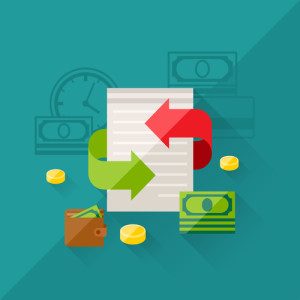When was the last time you refinanced your home loan?
If you’re like many U.S. homeowners, the fact remains that you very well could be over-paying on your mortgage every month by a serious amount based on what loans are available at current interest rates.
In fact, the according to a new study by the independent firm Black Knight Financial Services, Americans would collectively save $20 billion a year on mortgage payments if everyone who was eligible to refinance did so.
Called “The Refinanceable Population,” the number of people who could save significant money with a refinance (which means they are essentially over paying needlessly) had grown by 30% to an astounding 6.7 million homeowners. To put that in perspective, there are approximately 85 million homeowners in the U.S. and only roughly 80% hold mortgages (down to 68 million), so that amounts to 1 out of every 10 homeowners who are significantly over paying – and could save big money with a refinance.
Black Knight Financial Services conducts their survey of those who would stand to save money with a refinance based on their interest rates on record compared to related costs and savings. With low interest rates and rising equity, the number of homeowners who could refinance to save money has jumped from only 5.2 million homeowners just late last year.
How much will they save?
Black Knight estimates that these 6.7 million homeowners would lower their annual mortgage payments by a whopping $20 billion if they took advantage of available interest rates and loan programs. They also found that:
The total monthly savings if this Refinanceable Population got new mortgage loans is now around $1.68 billion, up from $1.28 billion only a few months ago.
That averages about $3,000 of savings annually for each and every homeowner who refinanced.
About one million of those 6.7 million homeowners could save over $400 per month if they refinanced.
An impressive 3.3 million homeowners could save $200 or more each month – about half of all those who are eligible.
All of that savings adds up quickly when you factor it over millions of people, and look at the potential use in their budget like amassing savings, paying down credit card debt, student loans, and auto loans, or even investing in home improvements that will yield returns in the future.
But there could be even more savings “on the table” for American refinancers, as a mere 15-basis point reduction in 30-year fixed mortgage interest rates would add another 2.1 million borrowers to the pool of people who could benefit from a refinance. If that happens, according to Black Knight, it would mean upwards of 8.8 million Americans were ready and able to get new home loans – an all-time high since rates were at historical lows in 2012-2013.
So why aren’t more Americans refinancing?
Experts still aren’t sure, but there could be a general reluctance to do anything they might deem risky with their home loan after the real estate and mortgage crash years ago. But these days, low-rate fixed loans or safe and responsible longer-term ARMS are the norm once again, with many of the most volatile products gone from the market.
The statistics of consumer confidence definitely don’t point to any logical reason why these 6.7 million homeowners aren’t taking advantage of potential savings.
According to the latest Fannie Mae Housing Survey in February 2016, only five percent of respondents thought mortgage rates will go down over the next 12 months, but 55% expect them to rise. So there definitely isn’t an ostensible incentive among the American public to wait for interest rates to drop more before refinancing.
The other part of the equation for any mortgage refinance is home equity, and likewise, those numbers play out in favor of refinancing now. According to Black Knight, homeowners are sitting on a collective $4.2 trillion in available home equity, which is up $600 billion in one year. In fact, about 37 million homeowners who owe less than their house is worth could pull out an average of $112,000 before hitting the cutoff for where banks require for a refinance. Additionally, more and more Home Equity Lines of Credit (HELOCs) are being originated again these days, yet with higher credit scores and more responsible requirements than we saw in the past.
Where is this equity concentrated?
Californians are sitting on the highest rate of home equity in the country. In fact, more than a third of America’s total collective home equity resides in California, and it is the state with the most borrowers eligible for refinances. Texas and Florida come in no. two and three on that list, yet are still dwarfed by the amount of potential refinancers in the Golden State.
According to the February 2016 Insight & Outlook report from Freddie Mac, borrowers who refinanced in the fourth quarter of 2015 were able to clip a full percentage point off their interest rate, with an incredible average 23% rate reduction during that term.
To put that savings in perspective, the average rate reduction during a refinance is only 13%, according to Freddie Mac, so borrowers are now saving nearly double that amount.
***
Are YOU one of those 6.7 million people who are eligible to save a portion of that $20 billion by refinancing their home – and potentially savings hundreds of dollars every month? Give us a call for a complimentary no-obligation analysis of your current loan to see if a refinance would save you money and help put you in a stronger financial position.

